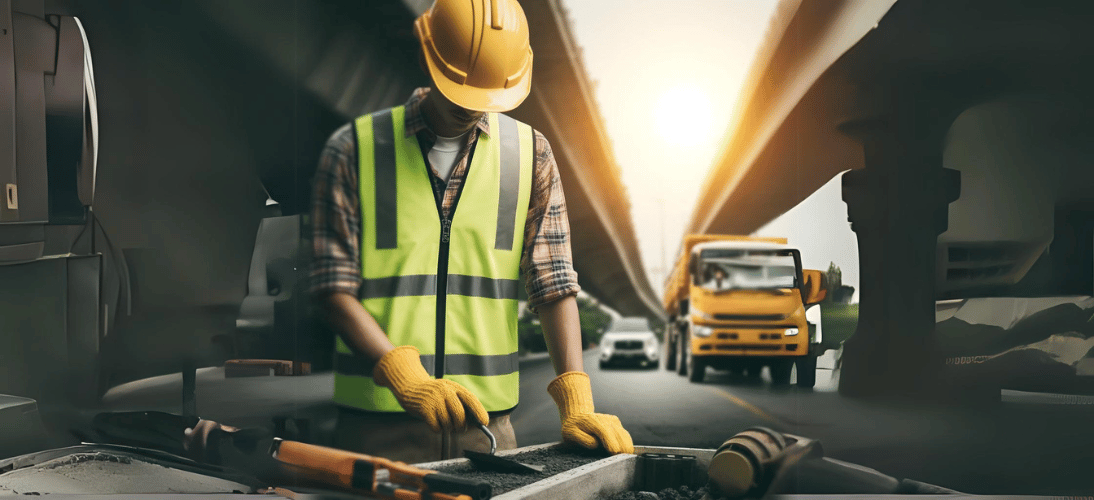Protecting Our Road Workers with High-Visibility Apparel
Published by Harmony Lab & Safety Supplies on May 15, 2024

Introduction
The construction industry is one of the most hazardous sectors, with workers constantly exposed to various risks, including traffic-related accidents. Unfortunately, recent years have seen a troubling rise in fatalities among construction workers due to traffic incidents. As we strive to improve safety measures on construction sites, the importance of high-visibility (hi-vis) apparel cannot be overstated. This article delves into the increase in traffic-related fatalities among construction workers and highlights the crucial role of hi-vis apparel in enhancing safety.
The Rising Trend of Traffic-Related Fatalities
Traffic-related fatalities involving construction workers have been on the rise, posing a significant concern for safety regulators and the construction industry alike. According to the latest data, a substantial number of construction workers lose their lives each year due to accidents involving passing vehicles. These fatalities not only represent a tragic loss of life but also highlight the need for improved safety measures and awareness.
Several factors contribute to this increase, including:
- Increased Roadwork Projects: As infrastructure projects multiply, more construction workers are exposed to traffic risks.
- Distracted Driving: The prevalence of distracted driving has led to a higher incidence of accidents in construction zones.
- Inadequate Safety Measures: In some cases, insufficient safety protocols and lack of proper equipment contribute to the risk.
Importance of High-Visibility Apparel
High-visibility apparel is designed to make workers more noticeable to drivers, especially in low-light conditions and busy traffic environments. Here’s why hi-vis clothing is essential:
- Enhanced Visibility Hi-vis apparel, typically made from fluorescent materials and equipped with reflective strips, ensures that construction workers are easily seen by passing motorists. This increased visibility is crucial in preventing accidents, particularly during early morning or late evening hours when natural light is limited.
- Safety Standards Compliance with safety standards and regulations is vital in the construction industry. High-visibility clothing is often mandated by safety regulations to ensure that workers are adequately protected. Adhering to these standards not only enhances safety but also helps organizations avoid legal penalties.
- Raising Awareness The use of hi-vis apparel serves as a constant reminder to both drivers and workers about the potential hazards in construction zones. It fosters a culture of safety and awareness, encouraging everyone to be more vigilant.
Best Practices for Implementing High-Visibility Apparel
To maximize the effectiveness of hi-vis apparel, consider the following best practices:
- Regular Training: Ensure that all workers receive training on the importance of wearing hi-vis clothing and how to properly use it.
- Quality Gear: Invest in high-quality hi-vis apparel that meets or exceeds safety standards. This includes vests, helmets, gloves, and other protective gear.
- Routine Inspections: Regularly inspect hi-vis apparel for wear and tear. Replace any damaged or worn-out gear to maintain optimal visibility.
- Supplementary Safety Measures: In addition to hi-vis clothing, implement other safety measures such as proper signage, barriers, and lighting to further enhance worker safety.
Conclusion
The rise in traffic-related fatalities among construction workers is a sobering reminder of the risks these essential workers face daily. High-visibility apparel is a simple yet effective measure to significantly reduce these risks and save lives. By promoting the use of hi-vis gear and adhering to safety standards, we can create a safer working environment for construction workers and ensure they return home safely to their families each day.
As drivers, let’s also do our part by staying alert, slowing down in construction zones, and respecting the hardworking individuals who build and maintain our infrastructure. Together, we can make a difference.